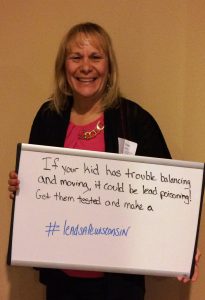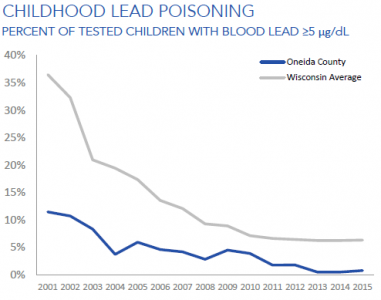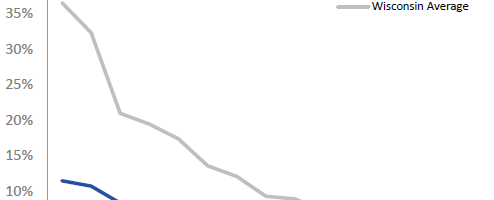 Public health is working hard to prevent lead poisoning before it causes damage to your child. It is most common in children under the age of 6 as they are closer to the floor and tend to put things in their mouth, their brains are still developing and lead exposure can cause learning and behavior problems in these young children.
Public health is working hard to prevent lead poisoning before it causes damage to your child. It is most common in children under the age of 6 as they are closer to the floor and tend to put things in their mouth, their brains are still developing and lead exposure can cause learning and behavior problems in these young children.
Children under the age of 5 in Oneida County, receive blood lead screenings during their Women Infant and Children, (WIC), appointment at Oneida County Health Dept. The children are screened at 1 and 2 years of age, and at age 3-5 if they have not had a previous lead test done. Lead testing is also available by appointment Monday, Tuesday, and Thursday, at the Oneida County Health Department. A public health nurse follows up with all elevated lead results in the county. Children with elevated capillary lead levels of 5mcg/dl or greater are referred to their physician for a confirmatory venous blood lead test. This program provides education on prevention of lead exposure to families of children whose confirmed lead levels are 5mcg/dl or higher. Families are also offered an in home assessment to help determine the source of the lead poisoning.
The Lead Program identifies primary sources of lead hazards in the community and promotes and provides screening of children six months to six years of age, education on reducing lead exposure, and counseling and environmental assessments for children who have elevated results.
Lead-based paint is a hazard if it is peeling, chipping, chalking, or cracking. Even lead-based paint that appears to be undisturbed can be a problem if it is on surfaces that children chew or that get a lot of wear and tear. The older your home is, the more likely it is to contain lead-based paint.
Contaminated dust forms when lead paint is dry-scraped or sanded. Dust can also become contaminated when painted surfaces bump or rub together. Lead chips and dust can gather on surfaces and objects that people touch or that children put into their mouths.
Contaminated Soil occurs when exterior lead-based paint from houses, buildings, or other structures flakes or peels and gets into the soil. Soil near roadways may also be contaminated from the past use of leaded gasoline in cars. Avoid these areas when planting vegetable gardens . It is also important to keep sand boxes covered.
Other sources of lead:
- Contaminated drinking water from old plumbing fixtures
- Hobbies
- Imported lead-glazed pottery and leaded crystal
- Lead-based painted toys and household furniture
- Lead smelters
- Folk remedies like azarcon & pay-loo-ah
- Cosmetics like kohn & kajal
- Some imported jewelry and metal charms
For more information on lead, please contact Breanne Vos, RN by phone: 715-369-6107 or email: [email protected]

